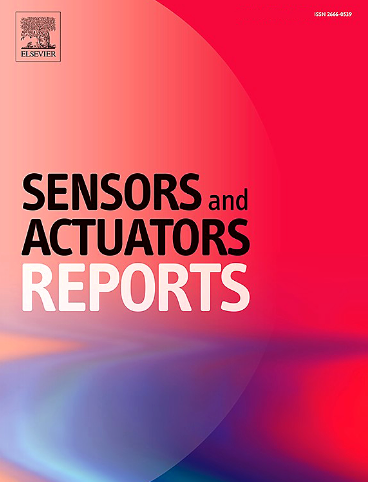利用二硫化钼纳米片和胺功能化铜掺杂碳点检测HPV-16 L1抗原
IF 7.6
Q1 BIOTECHNOLOGY & APPLIED MICROBIOLOGY
引用次数: 0
摘要
HPV-16L1是慢性宫颈癌的重要生物标志物之一。本文研究了利用二维二硫化钼纳米片和胺功能化铜掺杂碳点(f-CuCD)修饰电极表面的无标记电化学免疫传感器。具有MoS2等高表面积二维材料的铜掺杂碳点为抗体的固定提供了稳定的平台,有助于提高传感器的性能。MoS2/f-CuCD的使用是本研究的亮点,通过它可以在表面实现有效的抗hpv固定。利用电化学阻抗谱(EIS)分析了不同浓度HPV-16L1在改性丝网印刷碳电极(SPCE)上的响应。随着HPV-16L1浓度的增加,由于蛋白质分子的电导率较低,RCT值逐渐升高,峰值电流降低。该免疫传感器对HPV-16L1的检测范围为0.01 ~ 100 ng/µL,检出限低至8.30 pg/µL。还分析了加标人血清样本。结果表明,该方法是一种灵敏、选择性好、稳定可行的检测HPV-16L1的方法。本文章由计算机程序翻译,如有差异,请以英文原文为准。

Detection of HPV-16 L1 antigen using MoS2 nanosheets and amine-functionalized copper doped carbon dots
HPV-16L1 is one of the important biomarkers for chronic cervical cancer. The present work deals with the development of a label-free electrochemical immunosensor by modification of electrode surface using 2D MoS2 nanosheets and amine functionalized copper doped carbon dots (f-CuCD). The copper doped carbon dot with high surface area 2D material like MoS2 provides a stable platform for the immobilization of antibody which aids in the sensor performance. The use of MoS2/f-CuCD is the highlight of this work through which effective anti-HPV immobilization on the surface is achieved. Electrochemical impedance spectroscopy (EIS) was used to analyse the response of different concentrations of HPV-16L1 on the modified screen printed carbon electrode (SPCE). On increasing the concentration of HPV-16L1, the RCT value gradually increased and the peak current decreased due to the low conductivity of the protein molecule. The developed immunosensor was found to detect wide concentration ranges of 0.01–100 ng/µL with a low detection limit of 8.30 pg/µL for HPV-16L1. Spiked human serum samples were also analysed. It also proves to be a sensitive, selective, stable and feasible tool for the determination of HPV-16L1.
求助全文
通过发布文献求助,成功后即可免费获取论文全文。
去求助
来源期刊

Sensors and Actuators Reports
Multiple-
CiteScore
9.60
自引率
0.00%
发文量
60
审稿时长
49 days
期刊介绍:
Sensors and Actuators Reports is a peer-reviewed open access journal launched out from the Sensors and Actuators journal family. Sensors and Actuators Reports is dedicated to publishing new and original works in the field of all type of sensors and actuators, including bio-, chemical-, physical-, and nano- sensors and actuators, which demonstrates significant progress beyond the current state of the art. The journal regularly publishes original research papers, reviews, and short communications.
For research papers and short communications, the journal aims to publish the new and original work supported by experimental results and as such purely theoretical works are not accepted.
 求助内容:
求助内容: 应助结果提醒方式:
应助结果提醒方式:


